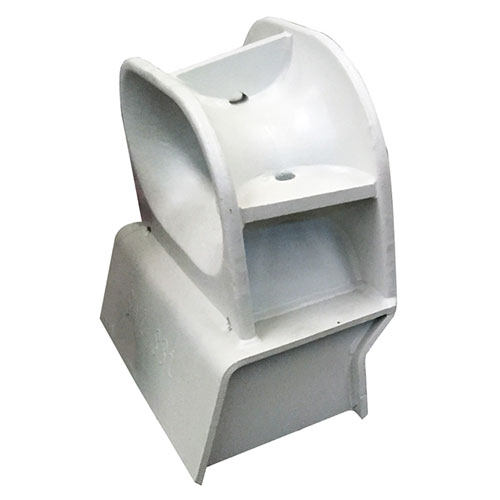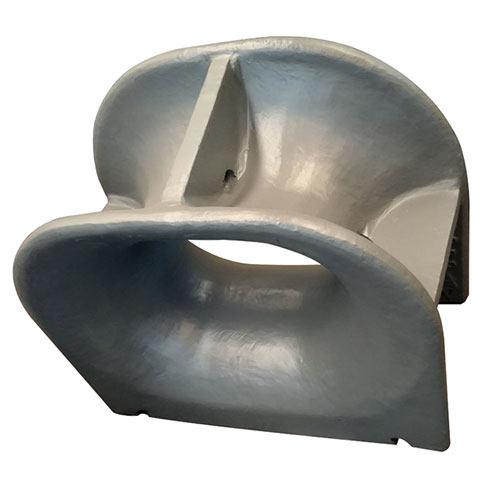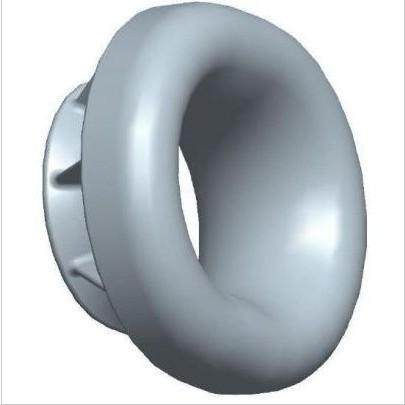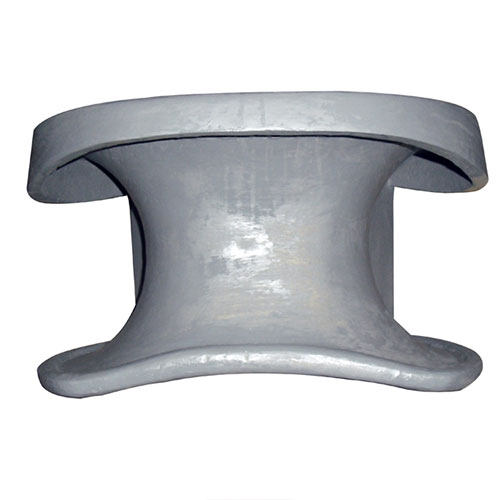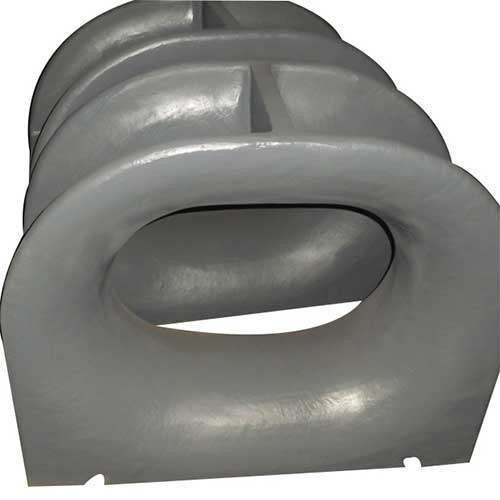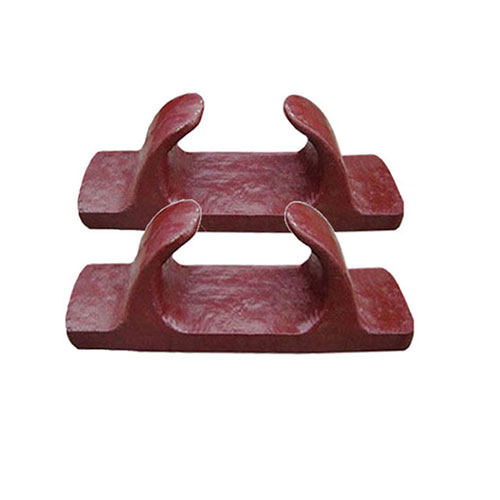Cast Steel vs. Cast Iron Mooring Chocks: Which One to Choose
For marine hardware, mooring chocks are critical in guiding and securing mooring lines, reducing friction, and preventing line wear during docking or anchoring. These components must be durable, corrosion-resistant, and capable of withstanding substantial mechanical stress. Among the materials used for manufacturing mooring chocks, cast steel and cast iron are the most common. But which material should you choose for your marine application? Let’s explore the key differences between cast steel vs. cast iron mooring chocks and what makes each material suitable or not for different maritime conditions.
Table of Contents
Understanding Mooring Chocks
Mooring chocks are used on ships and docks to guide mooring lines and reduce the wear caused by tension and movement. They come in various shapes, like closed chocks, open chocks, and roller chocks. They are typically welded or bolted to the vessel’s deck or bulwark. Because these chocks endure constant exposure to saltwater, tension, and mechanical impact, the material they’re made from significantly affects their performance and lifespan.
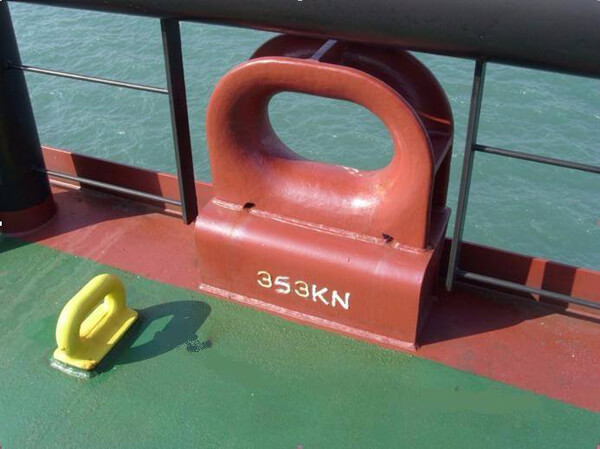
Understanding Cast Steel Mooring Chocks
Cast steel mooring chocks are essential marine fittings designed to guide and protect mooring lines where they pass through the ship’s structure or deck. Manufactured using high-strength cast steel, these chocks are engineered to handle the significant mechanical stresses encountered during docking, anchoring, or berthing operations.
Key Characteristics
- Superior Strength and Toughness: Cast steel is known for its high tensile strength and impact resistance, making it ideal for heavy-duty mooring operations. It can absorb shock loads and resist deformation under pressure.
- Durability in Harsh Environments: With proper surface treatments such as galvanizing or epoxy coating, cast steel chocks provide long-lasting performance even in corrosive saltwater conditions.
- Versatility: Available in various designs, such as closed chocks, Panama chocks, and open chocks, cast steel models can be customized to fit different vessel types and mooring setups.
- Weldability and Maintenance: Cast steel components are easier to weld and repair compared to cast iron, simplifying onboard maintenance and reducing downtime.
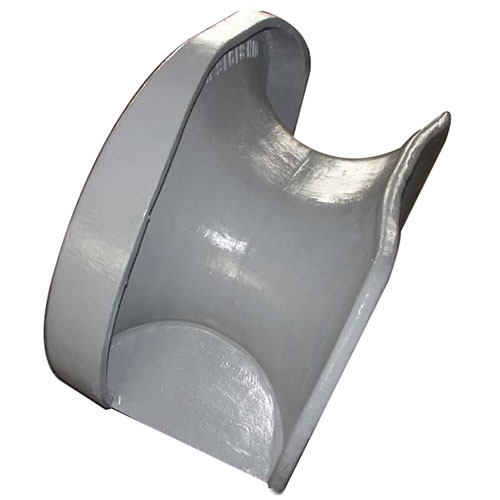
Limitations
- Higher Cost: The manufacturing and material cost of cast steel is generally higher than that of cast iron. This can be a factor for vessels with lower mooring demands or budget constraints.
- Heavier Weight: Cast steel chocks tend to be heavier than other alternatives, which might not be suitable for all vessel types, especially where weight optimization is crucial.
- Corrosion Without Proper Coating: Although durable, untreated cast steel is vulnerable to rust in marine conditions. Ongoing surface maintenance is essential to preserve longevity.
- Longer Lead Times for Custom Orders: Due to the complexity of casting and machining processes, customized cast steel chocks may take longer to produce and deliver compared to simpler iron alternatives.
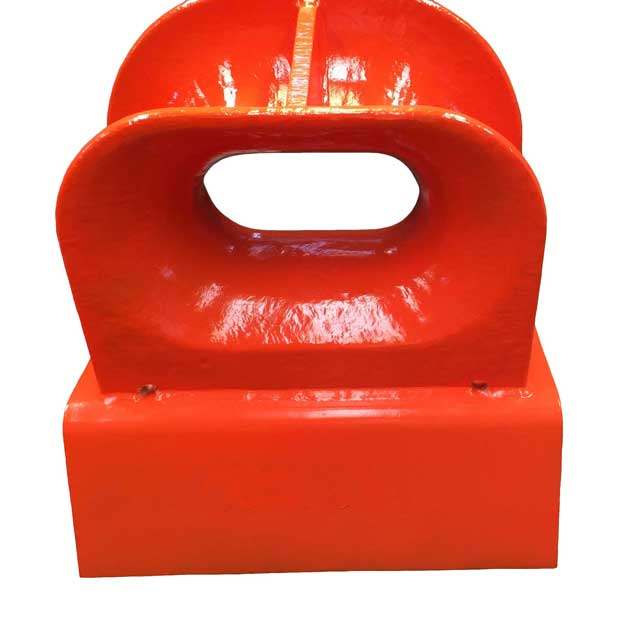
Applications
- Cargo ships
- Offshore vessels
- Tankers and bulk carriers
- Tugboats and naval vessels
Understanding Cast Iron Mooring Chocks
Cast iron mooring chocks are traditional marine fittings used to guide mooring lines and protect them from abrasion as they pass through a vessel’s bulwark or deck edge. Made from cast iron, typically gray cast iron and these chocks provide a stable, cost-effective solution for light to moderate mooring duties in less demanding maritime environments.
Key Characteristics
- Cost-Effective Manufacturing: Cast iron is easier and less expensive to produce than cast steel, making these mooring chocks an economical choice for budget-sensitive applications or smaller vessels.
- Good Surface Finish: Cast iron provides a smooth surface that helps reduce friction and wear on mooring lines during normal docking and undocking procedures.
- Wear Resistance: These chocks offer solid resistance to surface wear, especially in steady mooring conditions with minimal shock or dynamic loads.
- Corrosion Resistance: Cast iron has a natural resistance to corrosion due to its graphite content, although it may still require protective coatings for long-term use in harsh saltwater environments.
Limitations
- Lower Strength and Brittleness: Cast iron is more brittle and less impact-resistant than cast steel, making it susceptible to cracking under sudden high loads or heavy impacts.
- Difficult to Repair: Unlike cast steel, cast iron is not easily welded, making field repairs more challenging and sometimes requiring full replacement.
Applications
- Small to mid-sized boats
- Coastal vessels
- Low-load or non-critical mooring points
- Dock installations where budget constraints apply
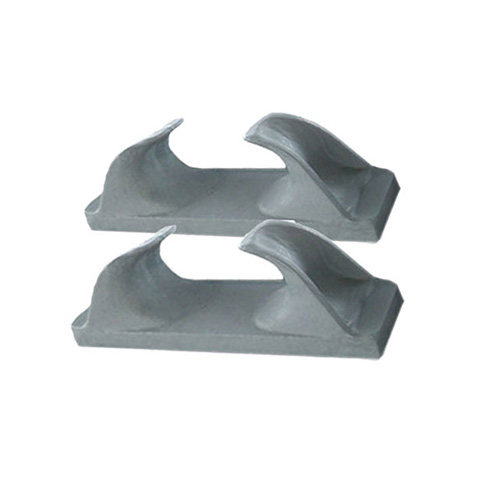
Comparison of Cast Steel vs. Cast Iron Mooring Chocks
| Feature | Cast Steel Mooring Chocks | Cast Iron Mooring Chocks |
| Material Strength | High tensile strength and impact resistance | Moderate strength, more brittle |
| Durability | Excellent, suitable for heavy-duty and dynamic loads | Adequate for low to moderate load conditions |
| Corrosion Resistance | Requires coating for long-term corrosion protection | Naturally resistant but still benefits from protective coating |
| Repairability | Weldable and easy to repair | Difficult to repair, usually replaced when damaged |
| Cost | Higher due to material and manufacturing complexity | More economical, ideal for budget-conscious applications |
| Weight | Heavier due to dense structure | Lighter than steel, but varies by design |
| Design Flexibility | Available in various types and custom configurations | Generally simpler, with fewer design variations |
| Compliance with Standards | Typically meets ISO, JIS, and other marine standards | May not meet high-performance certifications |
| Shock Load Resistance | Excellent – absorbs and withstands sudden forces | Poor – more prone to cracking under impact |
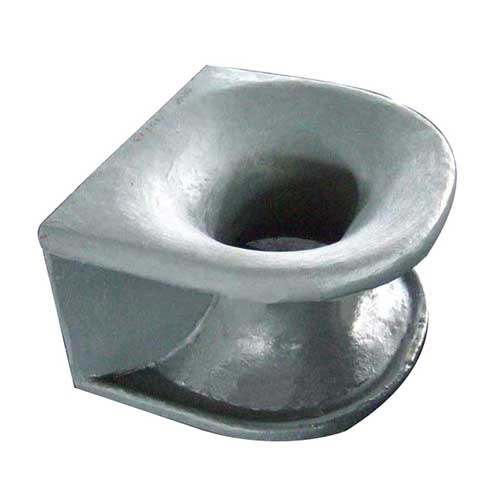
Which One to Choose Between Cast Steel vs. Cast Iron Mooring Chocks
When deciding between cast steel and cast iron mooring chocks, the choice should be based on the specific needs and requirements of your vessel or mooring system.
When to Choose Cast Steel Mooring Chocks
- High Load Handling is Required
If your vessel operates in high-stress conditions or experiences heavy and dynamic loads, such as offshore platforms, large tankers, or cargo ships, cast steel is the better option. It provides superior strength and impact resistance.
- Durability and Longevity Matter
Cast steel is more durable and resistant to wear and tear, making it ideal for vessels exposed to frequent or harsh operating conditions. This is especially important for long-term reliability in demanding maritime environments.
- Corrosion Resistance is Crucial
For vessels operating in saltwater or other corrosive environments, cast steel chocks offer better protection when coated with anti-corrosion treatments like galvanization. This is important for preventing rust and degradation over time.
- Repairability is Important
If you’re looking for mooring chocks that can be repaired on-site in the event of damage, cast steel is the best option. It is weldable, which means you can perform repairs and extend the service life of the chocks.
- Compliance with International Standards is Required
If your vessel needs to meet regulatory requirements and industry standards (e.g., ISO, JIS, classification society rules), cast steel is often the preferred choice, as it is more likely to meet these standards for strength and safety.
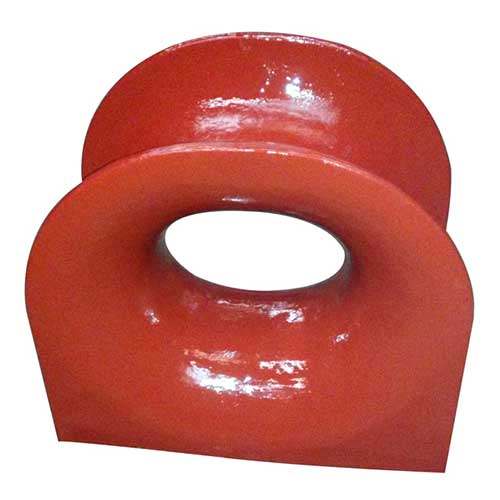
When to Choose Cast Iron Mooring Chocks
- Lower Budget and Cost-Effectiveness is a Priority
If you’re working within a tighter budget or on a project where cost is a significant concern, cast iron is more affordable. It offers an economical solution for smaller vessels or those with less demanding mooring needs.
- Moderate Load Handling is Sufficient
Cast iron is ideal for light-duty or moderate-load applications. It is well-suited for smaller vessels, fishing boats, or inland barges where the mooring conditions are less dynamic, and the chocks don’t need to endure extreme stresses.
- Maintenance and Replacement are Less of a Concern
If maintenance is not a top priority and you don’t expect the chocks to face heavy wear and tear, cast iron can be a good choice. However, keep in mind that cast iron is more brittle and harder to repair if damaged, often requiring full replacement.
- Less Harsh Environmental Conditions
Cast iron can perform well in freshwater or more controlled environments where corrosion and environmental stress are less of an issue. If your operations are not in a saltwater or extremely corrosive setting, cast iron may suffice.
- Longer-Term Replacement is Acceptable
If you don’t mind replacing the mooring chocks after some years of use, cast iron may work for your application. While it’s durable, it’s less reliable over time compared to cast steel, especially under impact or heavy stress.
Summary
- Choose cast steel mooring chocks if your application involves high stresses, requires durability, and needs repairability, especially in harsh environments like offshore or deep-sea operations.
- Choose cast iron mooring chocks if you have a smaller vessel, a lighter-duty mooring system, or a more controlled environment, and cost is a major consideration.
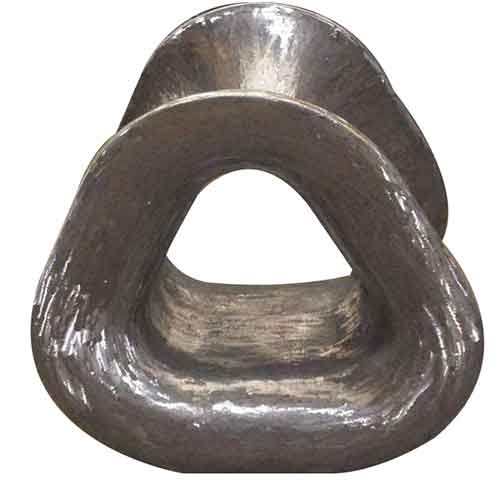
Final Thoughts
When it comes to cast steel vs. cast iron mooring chocks, each material has its place in the maritime world. Cast steel offers superior strength, toughness, and longevity and ideal for demanding marine environments. Cast iron, on the other hand, presents a more affordable option for lighter-duty applications but comes with limitations in strength and durability. Choosing between cast steel vs. cast iron mooring chock depends on the specific demands of your vessel’s mooring system, the environmental conditions it will face, and the budget available for procurement and maintenance.


